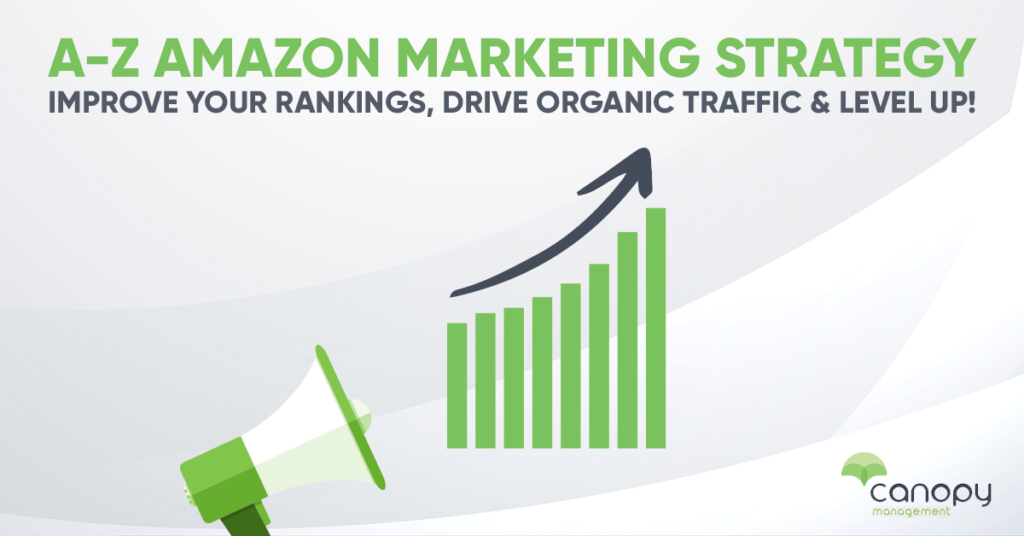The 5 Steps to Launching a Successful Amazon PPC Ad Campaign

The last 24 months have brought a tidal wave of shoppers to Amazon’s front door. The pandemic (and the changes in shopping behavior that it caused) has led to a LOT of consumers making the switch to online shopping. That’s why businesses are leveraging Amazon Advertising.
Amazon’s advertising platform allows sellers to promote their products directly on Amazon, increasing visibility and potentially boosting sales. This 5-step guide will help you navigate the Amazon Advertising landscape and get your campaigns off the ground.
To begin with, you’re going to need to understand how Amazon advertising really works.
1. Understanding Amazon Advertising
Before we dive in, it’s crucial to understand what Amazon Advertising is and how it works. The Amazon PPC platform provides several advertising solutions, including Sponsored Products, Sponsored Brands, and Sponsored Display. Each of these offers unique opportunities to promote your products to consumers who are actively browsing for items like yours.
Sponsored Products are cost-per-click (CPC) ads that promote individual listings, helping them stand out in search results and product pages. Sponsored Brands also operate on a CPC basis but allow you to advertise up to three products together along with your brand logo and a custom headline. Lastly, Sponsored Display ads use automatic placements and audience targeting to reach shoppers both on and off Amazon.

2. Identify Your Advertising Goals
What exactly are you hoping to achieve with your advertising?
Because it will shape your overall advertising strategy, defining your goals is a critical component of your hoped-for marketing success. Are you looking to drive more traffic to your product pages, improve brand recognition, or maybe you are trying to clear out inventory? Your goals could include increasing sales, boosting product visibility, launching a new product, or gaining market share.
More importantly, the goals should align with your overall business objectives. You realy can’t move forward effectively until you’ve addressed this question. The following steps will help you define your advertising goals:
Evaluate Your Business Needs
The first step in defining your advertising goals is to evaluate your business needs. This involves understanding your product offerings, market positioning, competition, target audience, and your current sales performance.
Identify Key Objectives
Next, identify key objectives based on your business evaluation. Your objectives could vary widely based on where you are as a business. For example:
- If you’re a new seller, your objective might be to increase visibility and awareness of your products.
- If you have a well-established product line, your objective might be to increase sales or market share.
- If you’re launching a new product, your objective might be to generate buzz and initial sales.
Quantify Your Goals
Once you’ve identified your objectives, the next step is to make them measurable. Assign specific numbers to your goals where possible. For instance, instead of having a goal to “increase sales,” make it more specific, such as “increase sales by 15% in the next quarter.”
Align Goals with Amazon Advertising Solutions
Now that you have quantified goals, align them with the appropriate Amazon Advertising solutions. If you aim to increase product visibility, Sponsored Products could be a suitable solution. If brand awareness is the goal, Sponsored Brands might be more appropriate.
Regular Review and Refinement
Finally, remember that your advertising goals are not set in stone. They’re probably going to change as your business evolves. Regularly review your goals and refine them based on the performance of your campaigns and changes in your business or market conditions.
It’s important to keep in mind that the most important aspect of goal setting is to ensure they are realistic, specific, and align with your overall business strategy. With clear goals, you can make more informed decisions about your advertising strategy, measure your progress more accurately, and achieve better results with your Amazon Advertising campaigns.
3. Set Up Your Amazon Seller Account
To advertise on Amazon, you’ll need either a Seller Central or Vendor Central account. Seller Central accounts are for businesses that sell products directly to consumers on Amazon. In contrast, Vendor Central accounts are used by manufacturers and distributors selling directly to Amazon.
Once you have your account set up, you’ll need to enable Amazon Advertising. Click the ‘Advertising’ tab then follow the prompt to get started. Choose your campaign type and follow the steps to create your campaign. If you want to set up a Store, click the ‘Stores’ tab and follow the steps to build your first page.
4. Create Your First Campaign
Creating your first campaign might seem challenging, but Amazon’s step-by-step process makes it manageable.
- Campaign Name: Start by giving your campaign a meaningful name that relates to the products or goals of the campaign.
- Daily Budget: Next, set your daily budget. This is the maximum amount you’re willing to spend on ads each day.
- Targeting: Choose between automatic targeting (Amazon targets your ads to relevant search terms) or manual targeting (you select the keywords).
- Ad Format: Select the format for your ad (Sponsored Products, Sponsored Brands, or Sponsored Display).
- Products: Choose the products you want to advertise.
- Bidding: Set your bid, which is the maximum amount you’re willing to pay when a shopper clicks on your ad.
- Duration: Choose whether your campaign will run indefinitely or set specific start and end dates.

5. Monitor and Optimize Your Campaigns
Launching your campaign is just the beginning. To ensure your Amazon Advertising efforts are successful, continuous monitoring and optimization are necessary. Use Amazon’s reporting tools to track key metrics like impressions, clicks, click-through rate (CTR), and conversion rate.
You want to pay close attention to your advertising cost of sale (ACoS), which measures the effectiveness of your Amazon ad campaigns. A high ACoS might mean your bid is too high, your ad isn’t relevant, or your product listing isn’t compelling enough. Adjust your strategy as necessary based on your findings.
At the same time, if you’re trying to increase brand recognition, you’re not going to worry quite as much about a high ACoS because with that type of campaign, you’re building the foundation for future sales.
Further optimization strategies include experimenting with different keywords, adjusting your bids, and testing different ad formats. If a particular keyword is driving a lot of traffic but not many conversions, you might want to consider reducing your bid on that keyword or removing it entirely.
Amazon’s A/B testing feature can be invaluable. It allows you to test different versions of your ad to see which one performs better. This could involve varying your product descriptions, images, or pricing strategies.
Finally, remember that success on Amazon Advertising often involves a learning curve. Keep testing, analyzing, and refining your approach based on your specific goals, target audience, and product offerings.

How Canopy Management Can Help
There’s no question that Amazon Advertising can be an incredibly powerful tool. By understanding the platform, establishing clear goals, setting up your seller account, creating your first campaign, and diligently monitoring and optimizing your efforts, you can drive meaningful results for your business.
As with any advertising platform, patience and persistence are going to be necessary ingredients that lead to eventual success. Over time, you’ll gain a better understanding of what works for your business and can adjust your strategies accordingly. Whether you’re a new seller on Amazon or an established business looking to expand your online presence, Amazon Advertising provides an exciting opportunity to engage with customers and grow your sales.
Canopy Management is a full-service marketing agency for Amazon and Walmart sellers. Our team consists of former Amazonians, multi-million dollar sellers, and award-winning experts.
When you consider the many ways that Canopy Management can help you grow your business, you’ll see why selling on Amazon is much easier “under the Canopy.”
- Strategic Growth Planning
- Listing Copywriting Optimization
- Listing Photography
- Product Videography
- Advertising Management
- Customer Service
- Demand Side Platform (Amazon DSP)
- Amazon Posts
- Full Service Management
- Amazon Review Aggregation



